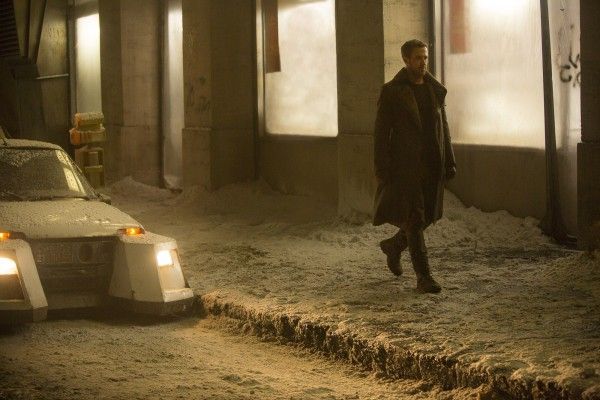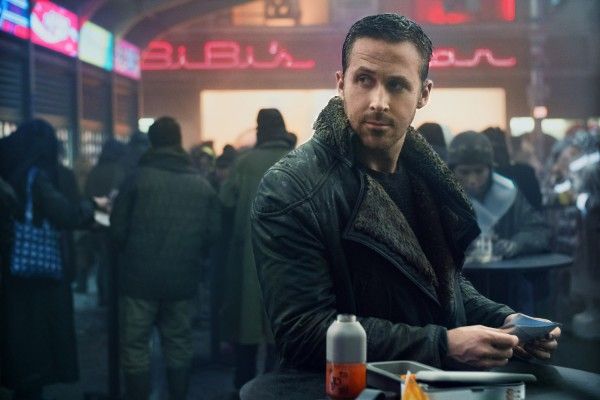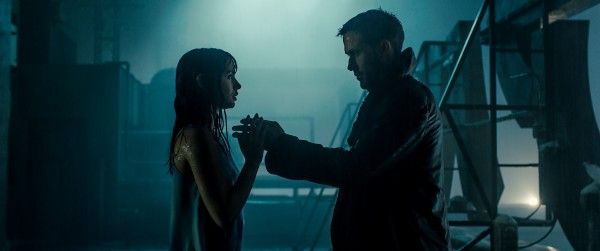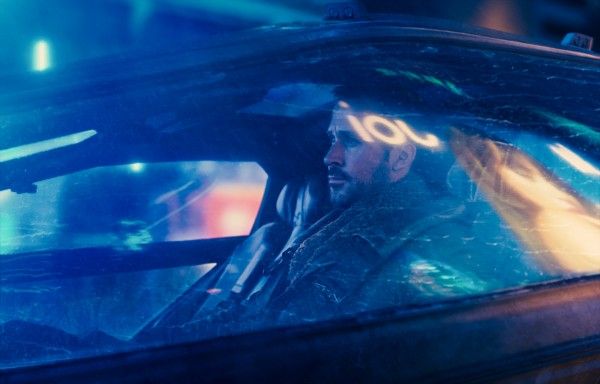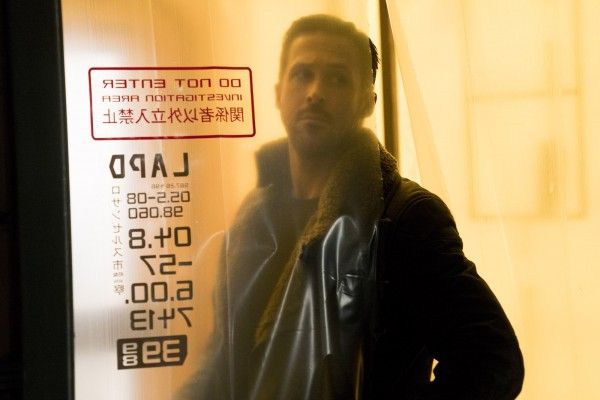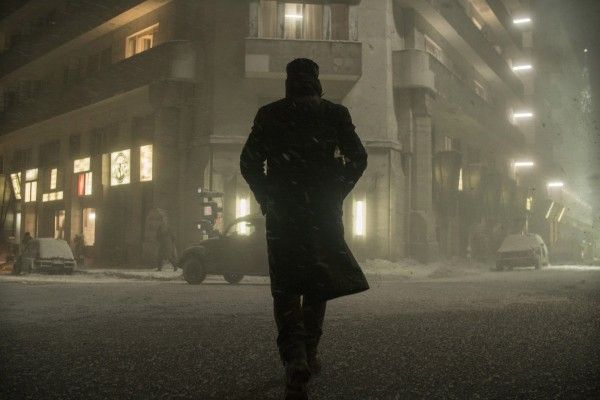With Blade Runner 2049 now in theaters, we wanted to talk about some specific aspects of the film, which means going into spoilers. If you have not seen Blade Runner 2049 yet, STOP READING NOW and come back after you see the movie.
A major reveal that’s been kept out of the marketing and (if critics acquiesced to director Denis Villeneuve’s request) reviews is that while Ryan Gosling’s character has officially been referred to as “K”, that’s a nickname. His full “name” is KD9-3.7, and he’s a replicant. He’s a newer model replicant that always obeys, and what’s more, K knows he’s a replicant. He’s called “Skinner” and “Skinjob” by his peers and neighbors, and despite being an outcast, he seems fairly at peace with his existence. He dutifully follows orders, “retires” older model replicants, and then goes home to his holographic girlfriend, Joi (Ana de Armas).
Eventually, K’s investigation leads him to believe that the memories he thought were implants were actually real and that he’s the lost son of replicant Rachel (Sean Young) and the possibly-a-replicant Rick Deckard (Harrison Ford). When he realizes that his memories might be real and not implants, his calm resolve shatters, and Villeneuve turns the revelation on its head. For a human, realizing he or she might be a replicant would be traumatizing. For K, realizing he’s not a replicant but a hybrid or next stage evolution is traumatic.
But then Villeneuve turns the film on its head again with K learning he is in fact a replicant and that the hybrid/evolved replicant* is Dr. Ana Stelline (Carla Juri). K discovers that his memories are implants but the memories are real. It’s just that instead of belonging to him, they belonged to Ana, and that’s why she wept when she saw those memories in his head.
K’s discovery that he’s a replicant with a hybrid’s memories leads to a choice—he can fight for somebody else and possibly change the course of human history, or try to recapture some semblance of a peaceful, quiet life with possibly a new Joi (Villeneuve wonderfully represents this inner conflict in a scene with a broken and beaten K standing in the rain, looking up at a gigantic Joi advertisement).
K decides to help Deckard and reunite him with Ana, thus making his own determination to help something larger than himself. While there are bigger storylines happening around K—the fight to upend the world order by having replicants recognized as equal to humans, the Wallace corporation trying to find Deckard’s child for their own ends, Deckard’s reunification with his daughter—his story still packs a wallop as it’s a Pinocchio tale where the replicant finds a way to be a real boy.
For Blade Runner 2049, discovering humanity is not a matter of destiny or even parentage, which is good. If K had turned out to be Deckard’s kid, it not only would have been a little contrived and pat, but it also would have undermined the film’s thematic thrust that humanity is defined by action, not origins. If K had been special simply by virtue of his birth, his story would be far less interesting since he didn’t control being born and he would still be a small part of a much larger narrative involving humans and replicants. The script wisely embraces K’s insignificance on a macro level—he is, at the end of the day, just another replicant albeit one who has the memories of the world’s first hybrid. What makes him significant comes from his choices, and ultimately, he chooses to sacrifice his life to save Deckard and reunite him with Ana.
All of this is bolstered by K’s relationship with Joi. On the one hand, you could cut out all of the Joi stuff and the plot would be largely the same, but that love story—a story between a hologram and a replicant—is what gives weight to K’s actions. While the Wallace corporation wants love to be nothing more than just another commodity they can sell, the relationship between K and Joi shows how love, and by proxy, humanity, can blossom anywhere even if the status quo would like to build a wall between humans and replicants. When K brings Joi with him and then loses her, he understands the weight of loss and love that Deckard has for Ana. Without that understanding, K’s actions are motivated by the plot, but nothing internal.
Granted, there are still some questions, like why K gains the ability to rebel if he’s not a hybrid and not an older model. It’s possible that Ana’s real memories altered his programming in some way that allowed him to lie to his superiors and forge his own path. The why of K’s rebellion is a worthwhile question in terms of how he’s different from other newer model replicants, but it’s not a question that defines him.
K is a fascinating character, and while he may not be a “chosen one” or special hybrid, he is, to borrow the motto of the defunct Tyrell Corporation, more human than human.
*For simplicity’s sake, I’m going to assume Deckard is human and Ana is a human-replicant hybrid.
For more on Blade Runner 2049, peruse our recent coverage in the links below:
- 'Blade Runner 2049' Spoiler Video Review: Breaking Down the Twists and Turns
- 'Blade Runner 2049': What Did You Think?
- ‘Blade Runner 2049′: Let’s Talk About That Ending
- 'Blade Runner 2049' Review: The Rare Sequel That Surpasses a Classic


